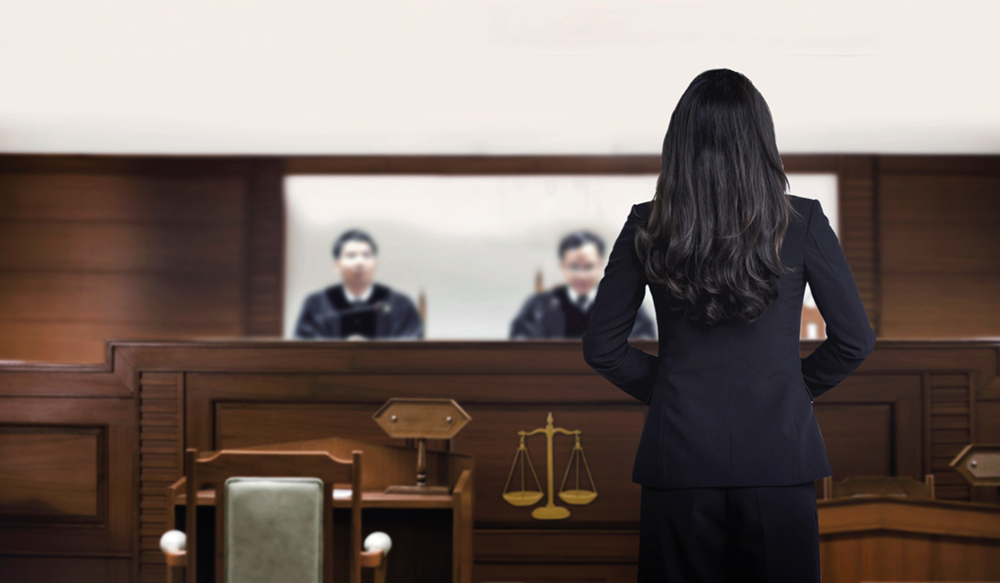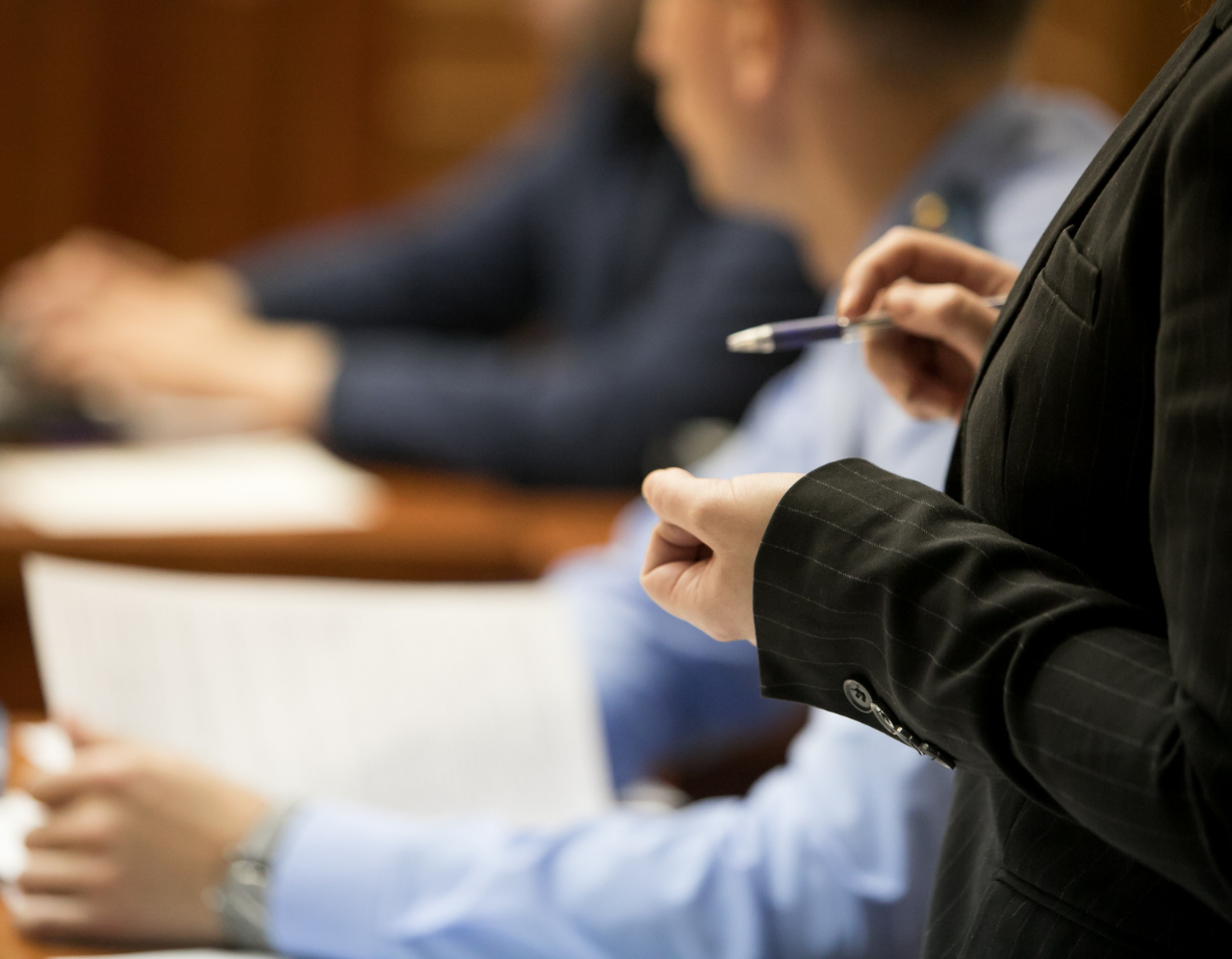Mastering the Art of Trial Presentations: Trick Techniques for Efficient Lawful Arguments
Mastering the Art of Trial Presentations: Trick Techniques for Efficient Lawful Arguments
Blog Article
Navigating the Intricacies of Trial Presentations: Tips for Seamless Distribution and Engaging Arguments
In the world of legal process, the art of trial discussion stands as an important determinant of success. As lawyers navigate the detailed web of court room dynamics, the capacity to perfectly supply disagreements and proof while captivating the court's attention ends up being paramount. The intricacies inherent in trial discussions need a fragile balance of approach, skill, and finesse. By developing strategies that ensure a refined distribution and crafting engaging arguments that resonate with the target market, attorneys can substantially boost their advocacy. In a world where persuasion reigns supreme, grasping the details of trial presentations is not simply a choice yet a need for those looking for to prevail in the courtroom.

Recognizing Test Objectives
To efficiently navigate a test, it is critical to have a clear understanding of the objectives that need to be accomplished. Before entering the court room, lawful groups must define their goals and desired results. These goals offer as assisting concepts throughout the test, forming approaches and affecting decision-making procedures.
Recognizing test purposes entails a comprehensive analysis of the case, legal criteria, and the customer's ideal passions. Trial Presentations. It calls for a thorough examination of the realities, recognizing vital concerns, and preparing for possible difficulties. By establishing measurable and specific objectives, lawyers can customize their disagreements and presentations to straighten with the wanted results
Furthermore, a clear grasp of test purposes allows legal groups to focus on evidence, witnesses, and legal debates successfully. It enables for the development of a coherent story that resonates with the judge and court, enhancing the overall instance presentation.

Organizing Evidence Properly
Having a clear understanding of test goals lays the structure for organizing evidence properly in lawful procedures - Trial Presentations. By aligning the discussion of evidence with the preferred outcomes of the trial, lawful teams can strengthen their debates and boost their persuasiveness. One vital element of organizing proof is categorization. Organizing evidence based upon motifs or significance to particular legal components can aid enhance the discussion and make complex details much more absorbable for the judge or jury.
An additional key component in organizing proof effectively is developing a logical circulation. Presenting evidence in a systematic and sequential way can aid build an engaging story that supports the lawful arguments being made. Furthermore, making use of visual aids such as charts, charts, or timelines can additionally boost the organization of evidence and help in making clear complex connections or series of events.
Additionally, making certain that all proof presented is pertinent and admissible to the situation is crucial. Inadmissible or unimportant evidence can diminish the toughness of the debate and potentially harm the trustworthiness of the here and now event. A thorough testimonial and option procedure need to be taken on to consist of just the most impactful and legitimately audio evidence in the trial presentation.
Crafting Persuasive Stories
Crafting compelling narratives plays an essential duty in Learn More Here offering influential debates during legal proceedings. A well-crafted narrative has the power to captivate the audience, evoke emotions, and ultimately sway the decision in favor of the presenting party. When constructing a narrative for a test discussion, it is essential to develop a clear storyline that highlights bottom lines and attaches them in a coherent way. Begin by laying out the realities of the instance in an engaging fashion, making certain that the series of occasions is very easy to follow. Present personalities efficiently, supplying history details that assists the target market recognize their activities and inspirations. Furthermore, integrating brilliant descriptions and engaging language can bring the story to life, making it a lot more unforgettable for the discretionary. By weaving Check This Out together evidence, testament, and lawful disagreements into a natural and convincing narrative, legal specialists can successfully advocate for their customers and boost the possibility of a favorable end result in the court.
Mastering Visual Help
Effective use aesthetic help is key to improving the influence and clarity of trial discussions. Aesthetic help, when utilized tactically, have the power to streamline complex information, strengthen vital points, and leave a long lasting perception on the court and court. To master visual aids in trial discussions, it is critical to ensure that they are clear, concise, and appropriate to the disagreements being made.
When including aesthetic help, such as charts, graphs, photos, or timelines, right into a test discussion, it is important to maintain them aesthetically appealing yet expert. The visuals must enhance the spoken disagreements, supplying an aesthetic depiction of the info being gone over without frustrating the target market with unnecessary details.
Furthermore, exercising with the visual aids ahead of time is important to guarantee a seamless delivery during the test. Acquainting oneself with the material, shifts, and timings of each visual aid can aid keep the circulation of the presentation and prevent technical problems that might occur.
Delivering Impactful Closing Arguments
An engaging closing argument offers as the culmination of a trial discussion, encapsulating the core narrative and encouraging the judge and court in the direction of a beneficial choice. Recommended Reading Begin by describing the major arguments that sustain your customer's placement, stressing why the proof presented throughout the test supports your story.
Additionally, including psychological allure can further strengthen your closing argument. Ultimately, a well-crafted closing disagreement ought to leave an enduring perception, engaging the court and court to rule in your client's favor.
Final Thought
In final thought, grasping test presentations includes comprehending goals, organizing evidence, crafting narratives, utilizing visual help, and supplying impactful closing debates. By applying these approaches properly, legal representatives can provide their situation perfectly and make compelling arguments in the courtroom. It is crucial to browse the intricacies of trial presentations with accuracy and ability to accomplish success in legal proceedings.
By straightening the discussion of evidence with the desired outcomes of the test, legal teams can reinforce their disagreements and improve their persuasiveness (Trial Presentations). To master aesthetic help in trial discussions, it is vital to make sure that they are clear, concise, and pertinent to the disagreements being made
A compelling closing debate offers as the culmination of a test discussion, encapsulating the core story and convincing the court and court towards a desirable decision. Begin by outlining the major arguments that sustain your client's placement, highlighting why the evidence offered throughout the trial sustains your narrative.In verdict, mastering test presentations entails comprehending purposes, organizing proof, crafting narratives, making use of visual help, and delivering impactful closing disagreements.
Report this page